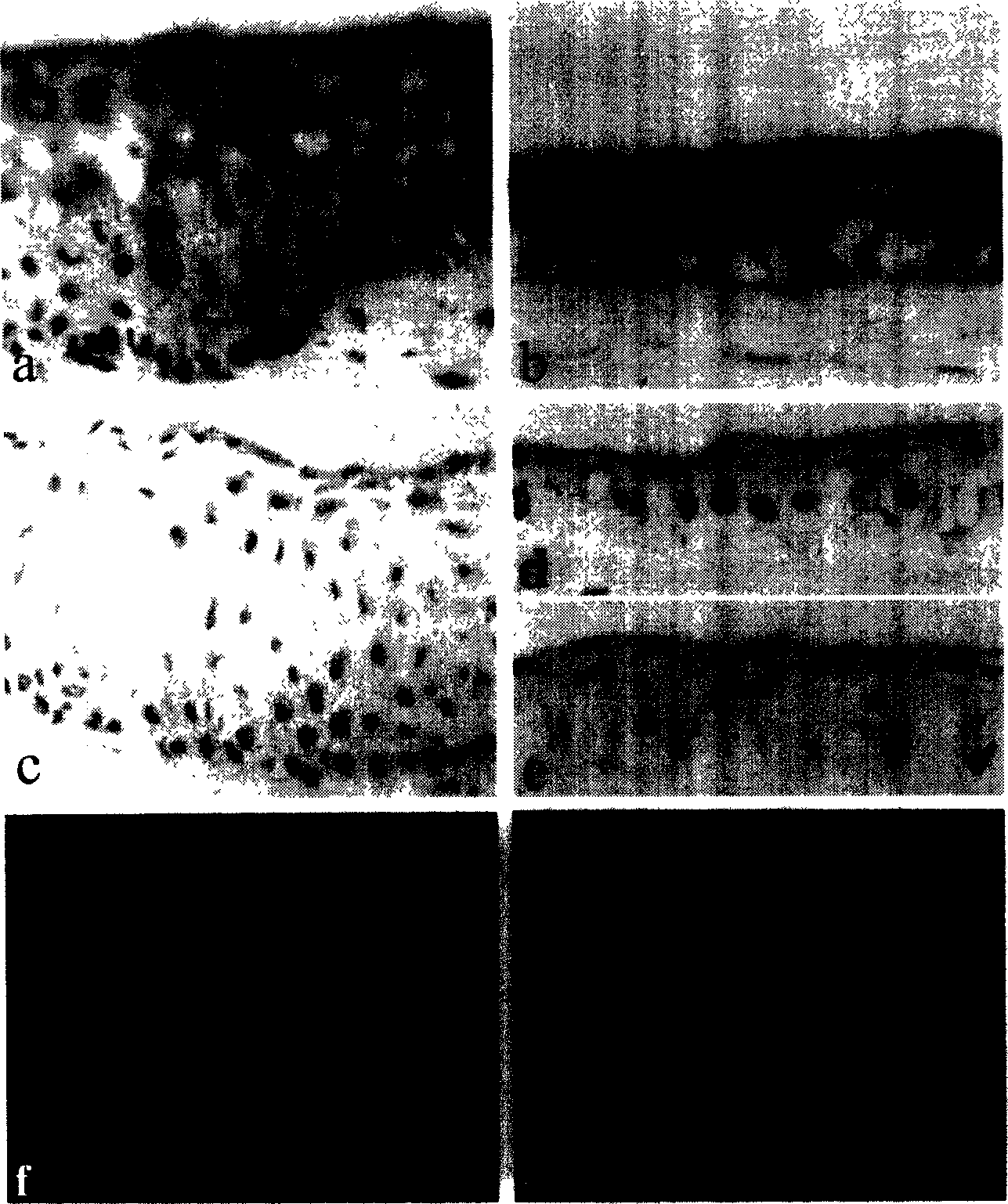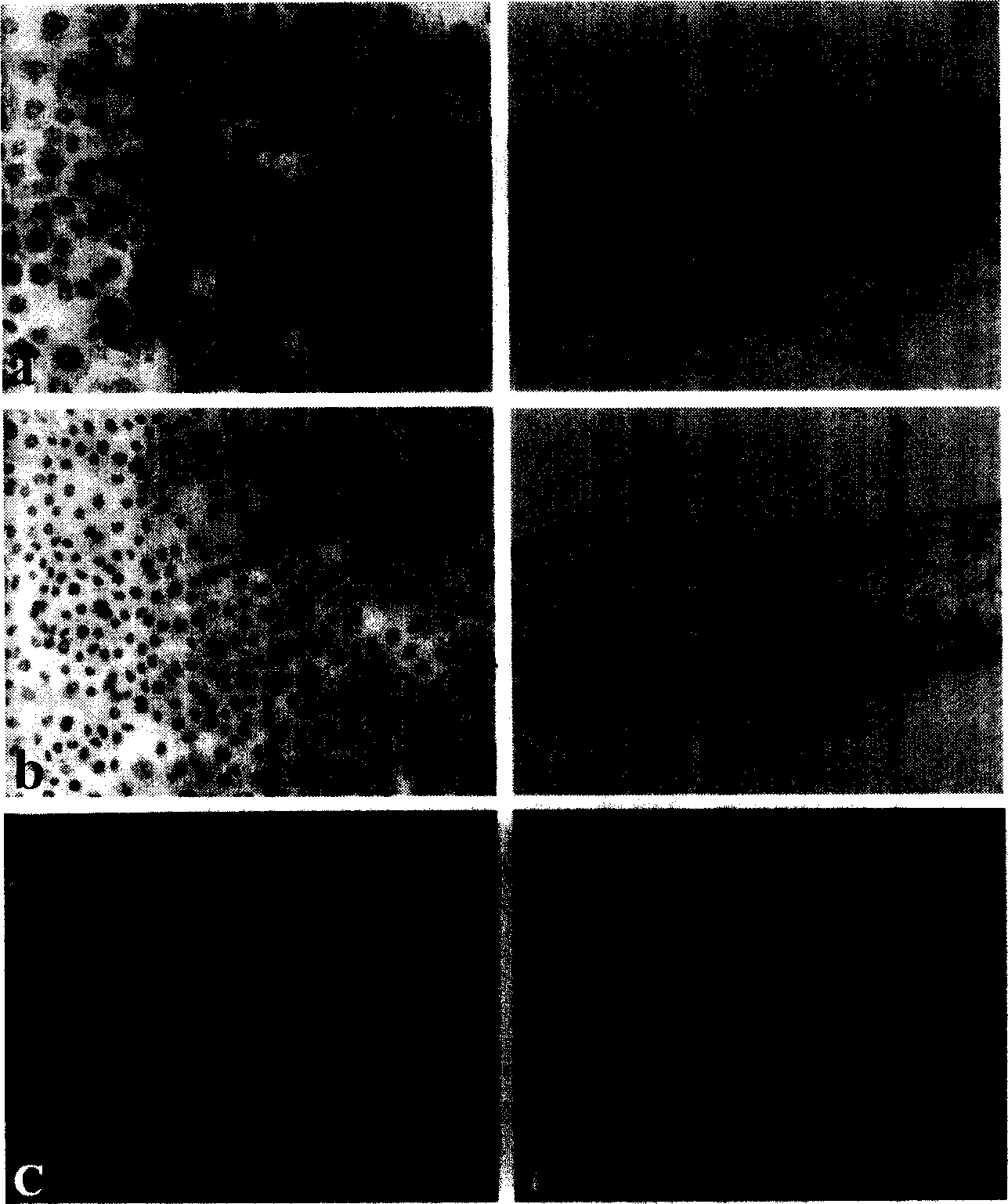Human corneal limbal stem cell tissue engineering product nourished by fibroblast and preparing process thereof
A technology of limbal stem cells and human fibroblasts, applied in the field of human limbal stem cells-amnion tissue engineering complex and its preparation, can solve the problems of clinical application threats and achieve the effect of promoting cell differentiation
- Summary
- Abstract
- Description
- Claims
- Application Information
AI Technical Summary
Problems solved by technology
Method used
Image
Examples
Embodiment Construction
[0027]A method for culturing human limbal stem cells-amnion tissue engineering complex for treating limbal stem cell-deficient ocular surface diseases is completed according to the following steps: 1. Preparation of amnion: take cesarean section fetal membranes of healthy pregnant women, and place them along the physiological gap Separate the amnion and chorion, spread the amniotic epithelium on the nitrocellulose membrane, put it in a preservation solution consisting of 50% DMEM (Gibco, USA) and 50% glycerin, and store it at -80°C for three more than a month. When in use, take out the frozen amnion from the refrigerator and put it in a 37°C water bath to thaw. Act with 0.1% EDTA for 30 minutes, then act with 0.1% trypsin for 30 seconds, and gently scrape off the amnion epithelial cells with a cell scraper. Lay the amniotic epithelium face up in the culture insert (Millipore, USA) for later use. 2. Preparation of human corneal limbal fibroblast trophoblast: Fetal corneal lim...
PUM
 Login to View More
Login to View More Abstract
Description
Claims
Application Information
 Login to View More
Login to View More - R&D
- Intellectual Property
- Life Sciences
- Materials
- Tech Scout
- Unparalleled Data Quality
- Higher Quality Content
- 60% Fewer Hallucinations
Browse by: Latest US Patents, China's latest patents, Technical Efficacy Thesaurus, Application Domain, Technology Topic, Popular Technical Reports.
© 2025 PatSnap. All rights reserved.Legal|Privacy policy|Modern Slavery Act Transparency Statement|Sitemap|About US| Contact US: help@patsnap.com



